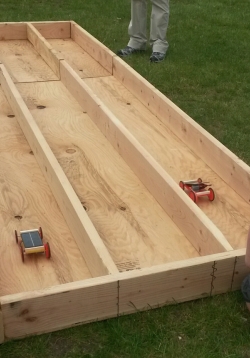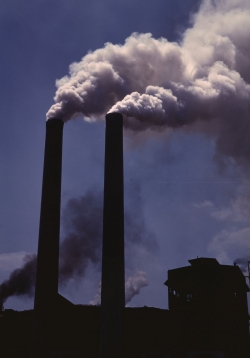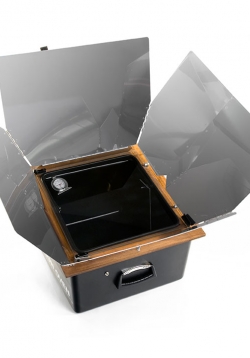Build Solar Cars
Students will build their solar vehicles. There are many options for them to do this, depending on the specific variables hoping to be tested following the construction and material-selection process. Students will be given the opportunity to try out...
Collect Data...Then Compare and Contrast
Students will race different iterations of solar cars: geared and pulley-system cars using varying gear ratios. Students will have the opportunity to make predictions, record data, and explain the results centered on the selection of these different...
Solar Ovens: Frontload Vocab. And Preview Standards
Vocabulary and standards will be reviewed throughout all of the lessons, but this day is dedicated to front loading the vocabulary and previewing the standards. Students will use their energy workbook to keep track of vocabulary from this point forward...
Non-renewable Energy/Global Warming/Pollution
NOTE: THIS LESSON RELIES ON EPA CLIMATE CHANGE RESOURCES THAT ARE NO LONGER AVAILABLE. STUDENTENERGY.ORG PROVIDES A POSSIBLE ALTERNATIVE RESOURCE.
This lesson will introduce the students to worldwide problems that we have with energy. (91% of the...
Renewable/Green Energy
In this lesson, students will be introduced to the different forms of renewable/green energy. They will learn about the photovoltaic cells installed in our school district, Beaverton Schools. However, any project on
Solar vs. Battery Circuits
In this lesson, students will explore and do small experiments with mini solar panels and circuit boards. The class will discuss the advantages and disadvantages of solar energy. Students will continue to work in their Solar Energy Student Notebooks to...
Lerato Cooks Up a Plan
The teacher will begin reading aloud the realistic fiction book, “Lerato Cooks Up a Plan” from Engineering is Elementary. In this book, a young girl from Botswana learns science ideas that help her design a solar oven for her family. Students will reflect...
Professional Sun Oven
Students will view a professional solar oven in use and hypothesize how it works. They will do this through observing the oven in action as it cooks an egg, then recording their observations. This will be recorded in their energy notebooks.
Insulation
Students will learn about the importance of insulation in a solar oven. They will use their own background knowledge, as well as observations of insulation used to contain thermal energy, and determine how this will be incorporated into solar ovens.
Heat Conduction of Different Materials
After a demonstration using Amazing Ice Melting Blocks, students will conduct small temperature experiments using different types of materials. They will use what they learn to build their solar ovens and additionally answer discussion questions in their...





